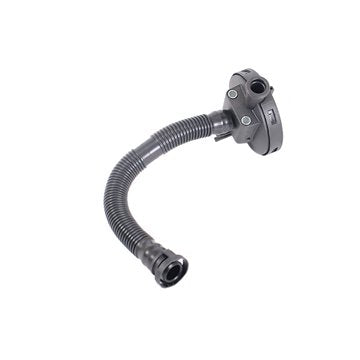Trust a premium clp engine for heavy-duty use.
Exactly How a Clp Engine Can Boost Efficiency in Various Industries
The arrival of CLP engines marks a significant shift in operational effectiveness across various sectors, driven by their capability to maximize fuel consumption and minimize downtime. Industries such as production and logistics stand to get significantly from their robust layout and consistent power output, which assure to streamline procedures and enhance productivity. As companies significantly prioritize sustainability along with effectiveness, the function of CLP engines becomes even extra important. What remains to be seen is exactly how these improvements will form the future landscape of industrial operations and their effect on more comprehensive economic trends (clp engine).
Review of CLP Engines
CLP engines, or Continual Liquid Propellant engines, stand for a substantial improvement in propulsion modern technology, especially for area applications. These engines utilize a continual feed system that enables the sustained expulsion of propellant, causing boosted effectiveness and performance compared to typical strong or hybrid propulsion systems. By preserving a constant flow of liquid propellant, CLP engines can achieve extra precise drive control, which is essential for navigating spacecraft in different objective circumstances.
The design of CLP engines integrates sophisticated products and cutting-edge fuel monitoring systems. clp engine. This results in lowered weight and increased integrity, necessary elements for long-duration space goals. Moreover, the constant procedure lessens the threat of combustion instability, a common obstacle in standard rocket engines.

Benefits in Production
The production of Continual Liquid Propellant (CLP) engines presents several notable benefits that boost both performance and cost-effectiveness. One of the main benefits is the streamlined manufacturing process, which decreases the complexity connected with standard propulsion systems. By using liquid propellant, manufacturers can attain higher precision in engine efficiency, bring about enhanced energy output and decreased waste.
Additionally, CLP engines assist in a higher degree of modularity, enabling for simpler combination into various manufacturing lines. This adaptability can significantly lower lead times and enhance overall operational flexibility. Using CLP technology also tends to reduce the need for substantial upkeep due to less moving parts, which translates right into decreased downtime and functional prices.

Applications in Logistics
Leveraging Continual Fluid Propellant (CLP) engines in logistics offers considerable advantages in operational performance and reliability. These engines offer a robust service for different transport needs, allowing the smooth activity of items across substantial distances. The intrinsic design of CLP engines permits regular power outcome, which converts into smoother and a lot more foreseeable transportation routines.
One of the vital applications of CLP engines in logistics remains in durable products transport, where they can drive both ground and aerial vehicles. Their capacity to keep high efficiency under differing load conditions guarantees that delivery timelines are satisfied, consequently enhancing customer complete satisfaction. Furthermore, CLP engines can be integrated right into automated logistics systems, assisting in real-time tracking and maximizing path planning.
Additionally, the sturdiness of CLP engines minimizes maintenance downtime, allowing click for source logistics business to maximize their functional capabilities. This is especially advantageous in warehousing procedures, where performance in taking care of and moving products is essential. As logistics proceeds to progress, the combination of CLP engines represents a forward-thinking approach that not just enhances efficiency but also sustains the sector's expanding demands for reliability and speed.
Influence on Power Performance
Exactly How do Continual Liquid Propellant (CLP) engines improve energy performance in transportation? CLP engines make use of a constant flow of fluid gas, enhancing combustion procedures and maintaining a stable thrust result. This layout decreases energy losses related to conventional combustion engines, where gas distribution can differ and result in inefficiencies.
The constant operation of CLP engines enables for a more efficient thermal cycle, causing higher certain impulse compared to conventional engines. clp engine. This equates to decreased gas intake for the very same amount of job done, considerably reducing operational costs across numerous transport fields, including aviation and maritime industries
Furthermore, the capability of CLP engines to keep optimal performance under varying lots conditions decreases the requirement for constant acceleration and slowdown, better boosting fuel efficiency. Enhanced energy efficiency not just contributes to set you back financial original site savings but also leads to decrease greenhouse gas exhausts, lining up with international sustainability objectives.
Future Trends and Innovations
Arising innovations in Continuous Liquid Propellant (CLP) engine innovation pledge to transform the landscape of transportation efficiency and sustainability. As industries pivot towards greener alternatives, CLP engines stand at the center, incorporating ingenious materials and layout techniques that boost performance while reducing ecological influence.
One of the most appealing patterns is the adoption of hybrid systems that integrate CLP engines with eco-friendly energy sources. This harmony can enhance fuel consumption and decrease discharges, lining up with worldwide sustainability objectives. Developments in computational fluid characteristics (CFD) are assisting in the layout of more aerodynamically efficient engines, leading to minimized drag and improved gas efficiency.
Additionally, the development of wise monitoring systems is readied to enhance functional efficiencies. These systems leverage information analytics and IoT modern technology to enhance engine efficiency in real-time, guaranteeing that the engines run within their most efficient parameters.
As research study remains to check out alternative propellant formulations-- such as biofuels and synthetic gas-- the future of CLP engines looks promising. By using these developments, markets can not only boost their efficiency yet likewise contribute considerably to a cleaner, more lasting future in transport.
Final Thought
To conclude, content CLP engines stand for a considerable innovation in performance across numerous sectors. Their capability to enhance fuel usage and reduce functional prices, combined with a continual feed system, enhances power result and functional integrity. The assimilation of sophisticated products and fewer relocating parts minimizes maintenance needs, while alignment with sustainability objectives positions CLP engines as a pivotal technology for the future. Proceeded development in this area assures further renovations in efficiency and environmental efficiency.